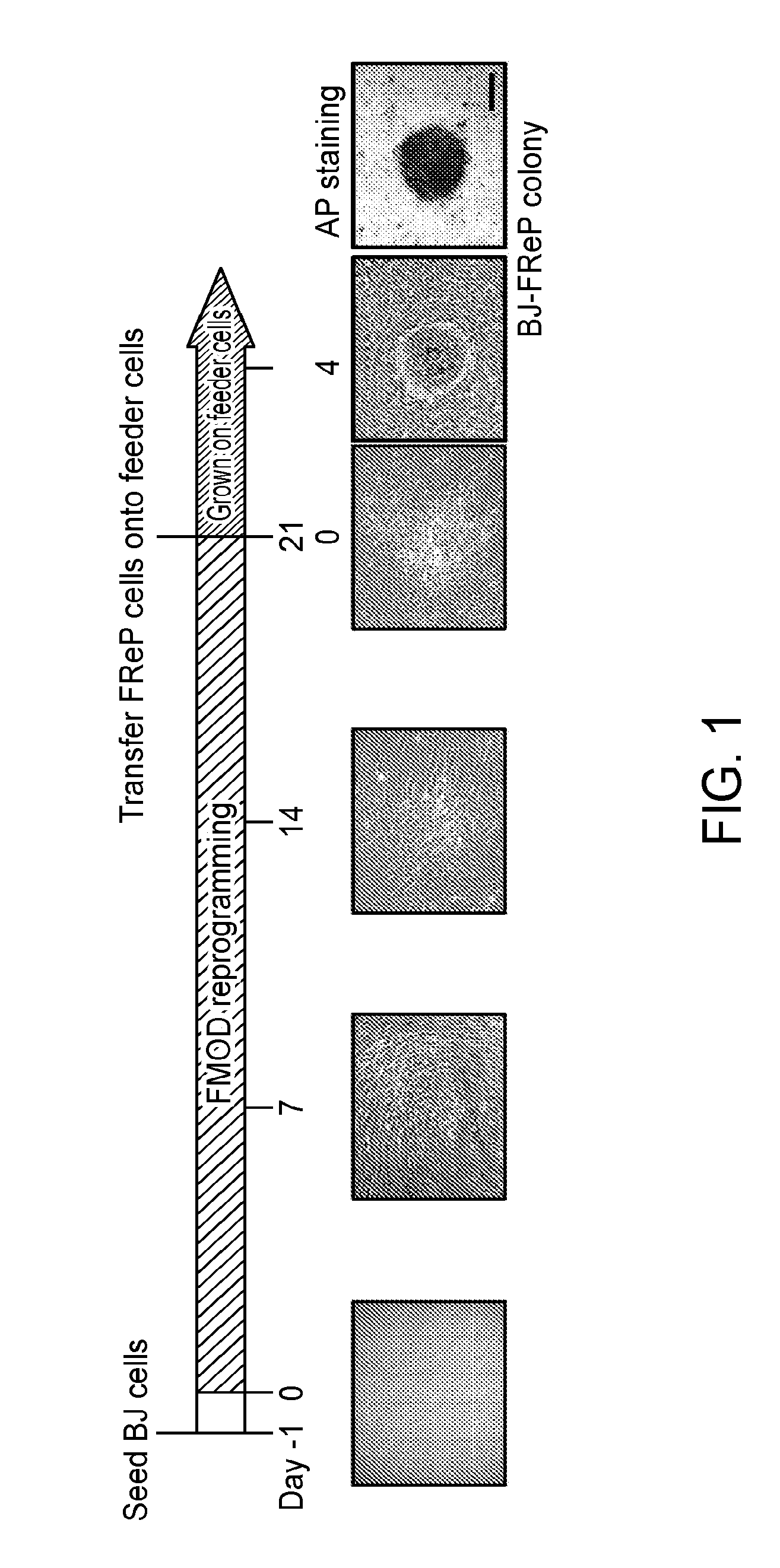Method and composition for inducing human pluripotent stem cells
a human stem cell and cell technology, applied in the field of cell pluripotency reprogramming, can solve the problems of ips cell tumorigenicity, impede clinical application, and potentially unsafe human use, and achieve the effect of slowing down the growth rate and inhibiting the growth rate of ips cells
- Summary
- Abstract
- Description
- Claims
- Application Information
AI Technical Summary
Benefits of technology
Problems solved by technology
Method used
Image
Examples
examples
[0154]The following examples illustrate, rather than limit, embodiments of the present invention.
Studies on Reprogramming Human Fibroblasts to Pluripotency Using a Single Protein, Fibromodulin
Summary
[0155]Pluripotent and / or multipotent stem cell-based therapeutics are a vital component of tissue engineering and regenerative medicine. The generation or isolation of safer and readily available stem cell sources will significantly aid clinical applications. We report here a technique using a single molecule, recombinant human fibromodulin protein (FMOD), to reprogram human fibroblasts into multipotent cells. Like virally-induced pluripotent stem (iPS) cells, FMOD reprogrammed (FReP) cells express pluripotency markers, form embryoid bodies (EBs), and differentiate into ectoderm, mesoderm, and endoderm derivatives in vitro. Notably, FReP cells regenerate muscle and bone tissues but do not generate teratomas in vivo. Unlike iPS cells, undifferentiated FReP cells proliferate slowly and exp...
PUM
 Login to View More
Login to View More Abstract
Description
Claims
Application Information
 Login to View More
Login to View More - R&D
- Intellectual Property
- Life Sciences
- Materials
- Tech Scout
- Unparalleled Data Quality
- Higher Quality Content
- 60% Fewer Hallucinations
Browse by: Latest US Patents, China's latest patents, Technical Efficacy Thesaurus, Application Domain, Technology Topic, Popular Technical Reports.
© 2025 PatSnap. All rights reserved.Legal|Privacy policy|Modern Slavery Act Transparency Statement|Sitemap|About US| Contact US: help@patsnap.com



